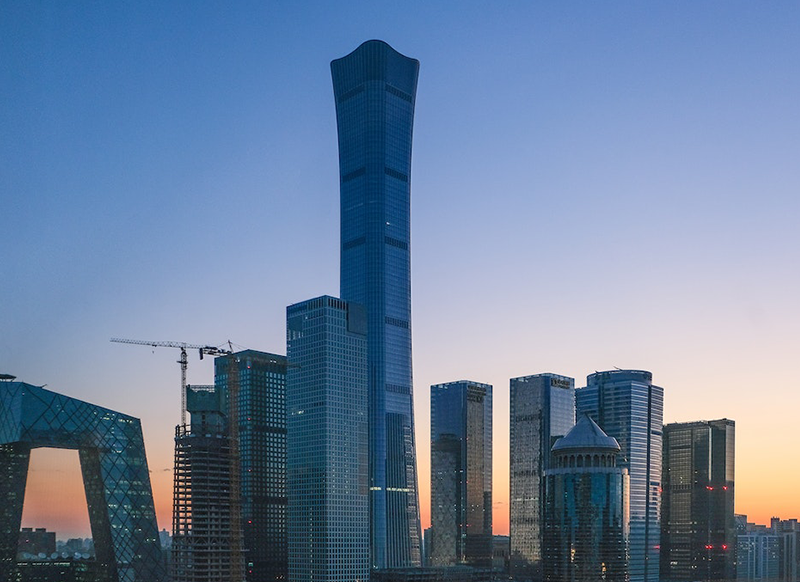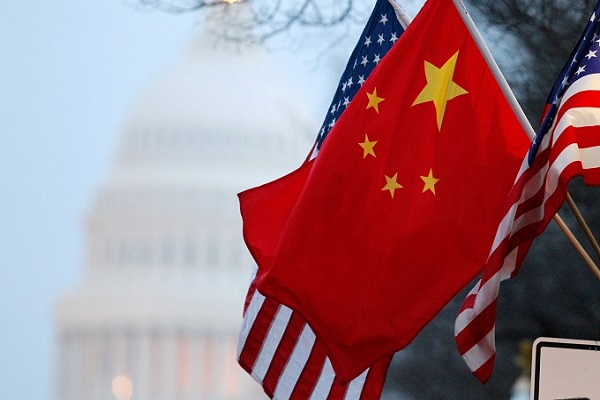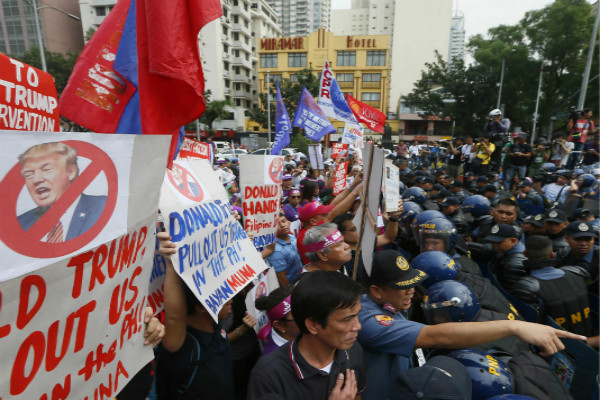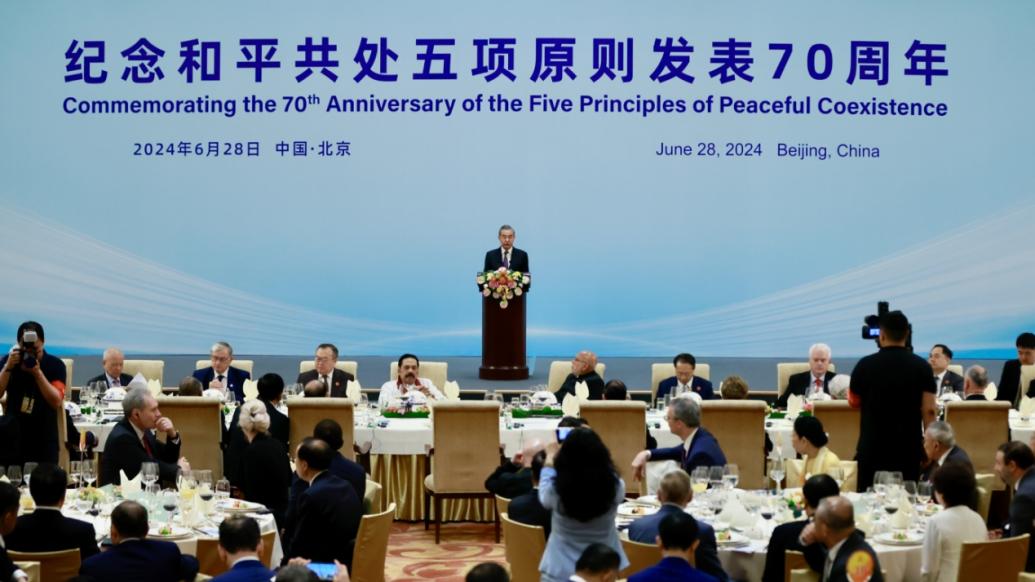Editor’s Notes:
Since the 1990s, housing reform has triggered a wave of marketization in China's real estate market, leading to the rapid development of the real estate industry in the following two decades. However, while the real estate industry has become the driving force for domestic demand, it has also exposed persistent issues such as "soaring housing prices" and "land-based finance," giving rise to severe secondary problems like "forced demolitions." The current real estate industry is facing uncertainties, and the "housing is for living, not for speculation" policy has not shown significant results. Where is the way out for the real estate industry? This article points out that the peak of China's real estate development has already passed and has held the Chinese economy hostage for years. In the future, its economic function should be weakened, and opportunities for transformation should be directed toward the social function of real estate.
For a long time, the real estate industry has played a significant role in promoting China's economic growth, to the extent that some economists view real estate as a pillar industry of the Chinese economy. China has completed the journey that took developed economies over a hundred years in less than 30 years. While addressing the "scarcity economy" issue in the housing sector before the reform and opening up, it has also fostered many newly rich. Under the so-called "GDP-ism," China's real estate has developed rapidly, only considering the contributions of real estate to the economy (mainly the quantity of GDP) and local finance, without spending enough time thinking about the impact of real estate on society as a whole, or even considering the impact on the economic structure itself. As a result, the development of the real estate industry has not only given rise to more and more problems, but if mishandled, it could even lead to a financial crisis. From any perspective, the real estate industry has held the Chinese economy hostage for too many years, and now is the time to put an end to this situation.
Real Estate Traps the Future of Young People
Many signs indicate that today's real estate market is chaotic and disordered. The recent frequent real estate crises are merely a result of the industry's distorted development. For a long time, China's real estate has exhibited several main characteristics.
First, the vacancy rate is too high. With the decline in population (due to low birth rates and migration to second and third-tier cities), real estate in third and fourth-tier cities is declining rapidly. Even in overcrowded megacities like Beijing, Shanghai, and Shenzhen, where housing demand remains rigid, the vacancy rate is still around 7%, especially astonishing for office buildings. By the end of the second quarter of 2022, among key cities nationwide, nine cities had Grade-A office building vacancy rates higher than 30%, facing significant pressure to reduce inventory; eight cities were in the controllable range of 20% to 30%, and Beijing, Shanghai, and Guangzhou were within 20%. Although this situation is related to the overall economic conditions, it is also associated with many local governments not following market economy rules.
Second, too many people are without housing. Although China's household homeownership rate is not low, considering the mobility of today's society, the urban housing supply is far from sufficient. In 2020, the average housing per urban resident in China reached 1.06 units, which is not considered a shortage but is still lower than the level in developed countries. According to OECD data, the United States has the highest number of housing units per capita at 2.4, with an OECD country average of 1.7 units. The current contradiction is that urban real estate has become an investment field for middle and high-income groups, with housing not reaching the hands of those who genuinely need it. Although there are more and more large cities, most of the floating population does not have a sense of belonging to the cities they work in, except for a small number of urban residents. For them, cities are just places to work, not places to live - not because they don't want to live in cities, but because they can't afford to buy a house or are ineligible to purchase one.
Third, it's increasingly difficult for young people to survive and develop. The low birth rate in cities leads to a need for more young labor input. Although cities have always been a place for young people to start businesses and innovate, they are becoming increasingly unfriendly to them. Soaring housing prices are daunting to more and more young people. Empirically, innovation is a middle-class phenomenon, as only the middle class can afford the risks of innovation. Homeownership is one of the main manifestations of the middle class. Because many cities cannot solve housing problems for young people, innovation is weak. In reality, first-tier cities make it difficult for young people to bear high housing prices, and even medium and large private enterprises struggle to afford the high rents.
It can be said that real estate not only traps the economy but also traps the future of young people and, consequently, the future of the nation. Globally, few economies regard real estate as an economic pillar. Real estate is a social pillar because housing is the foundation of both families and society. Society will lack a stable foundation if the real estate issue is not well resolved. We can learn from the examples of the United States and Singapore. The United States is the world's leading economy. Still, its system, overly dominated by capital, has not solved the housing problem, leading to a significant wealth disparity in the housing sector. During economic downturns, homeowners have the right to evict tenants who cannot afford rent, so in recent years, some US cities have seen movements resisting rent payments. In contrast, Singapore presents a different picture. Singapore's income inequality and wealth disparity are not lower than those in the United States, but its society is stable. This stability is because the Singaporean government has effectively developed a public housing system that protects society, achieving at least basic social equity.

For a long time, China's real estate has been overly capital-driven, focusing only on the economic function and neglecting the social function. Both state-owned and private capital is driven by the goal of increasing GDP and maximizing profits. Only after the 18th National Congress of the CCP did China establish the policy concept of "housing is for living, not for speculation." However, due to long-standing accumulated problems, China has made enormous efforts in recent years to control the further malignant development of the real estate sector but has not resolved the structural issues. It is, therefore, not surprising that the deep-seated real estate problems have been exposed one by one recently.
Real estate Does Not Need to be a Pillar Industry Anymore.
The real estate sector, considered a pillar industry, has faced serious issues and needs to be treated with care and seriousness. But does real estate need to become a pillar industry again, as some economists suggest? This is not a simple question and requires scientific thinking.
The real estate industry can pose risks. As a basic industry, the real estate sector possesses a ripple effect involving extensive industrial chains. It can directly or indirectly impact financial markets, local fiscal policies, employment, economic development, and social stability. The real estate industry has absorbed many bank loans, and properties are the primary collateral for financial credit. The stable development of the real estate market is directly related to the safety of the financial system. Suppose the real estate industry encounters significant problems. In that case, a financial crisis will be hard to avoid, affecting the real economy through contagion, leading to large-scale unemployment, and posing a considerable threat to economic and social stability.
However, this is not a reason to redefine real estate as a pillar industry. People need to realize thoughtfully that it is not realistic for the real estate industry to support the next stage of China's economic development, especially for such a massive economy as China. From the experience of world economic history, no economy can rely on real estate for a long time to become a high-income country. On the contrary, if real estate is not handled well, it will drag down the economy. For example, Japan has been mired in long-term economic difficulties since its real estate bubble collapsed. China's real estate sector has become excessively industrialized and commercialized, making it one of the sources of social injustice.
Globally, real estate is a highly social field, not purely economic. "Houses are for living, not for speculation" can be considered a universal truth. Empirically, wherever real estate issues are handled well, the economy can achieve sustained development, and society can achieve sustained stability. In short, real estate is one of the primary means to ensure fundamental social fairness. The peak of China's real estate market has passed, and the current problem is the unfair distribution of housing rather than a lack of real estate development.
To Solve the Real Estate Dilemma, a Grand Strategy is Needed
In actuality, China's real estate sector provides an opportunity for transformation, correcting previous mistakes, and achieving coordinated economic and social development. From this perspective, many of the current approaches to addressing real estate issues in various regions not only fail to fundamentally solve structural problems but also create more issues. Considering past experience, the core of different approaches is essentially the government stepping in: either through banks offering financial assistance to prevent real estate market collapse or state-owned enterprises acquiring properties. However, these are merely short-term, isolated solutions that do not consider the financial system's or state-owned enterprises' best interests.
The financial system and SOEs rescue real estate primarily from non-market considerations. The primary reason for the financial system's intervention is to protect its own interests, as the money used by real estate developers largely originates from the financial system. If the real estate market collapses, it will likely become a financial crisis. In this regard, there is no fundamental difference between China and the United States. However, the problem is that the financial system's issues will eventually be passed on to society in various ways.
SOEs can also be an effective economic tool for resolving real estate dilemmas. However, except for those which specialize in the real estate sector, SOEs should not become real estate companies; real estate management should not create a massive bureaucracy. Today, when some private real estate enterprises face a crisis, they are acquired by SOEs, which is not a long-term solution. SOEs should focus on their own fields, and the real estate industry should not aim for "govern mentalization" or "SOE-ization." Blind "acquisitions" will instead affect the regular operation of SOEs themselves.
To address the real estate issue, the first step is to establish a mindset or define the position of real estate in the overall society. Then, we need to focus on institutional and policy design. In terms of mindset, we must break away from the previous "GDP-centric" approach dominating the real estate sector and establish a new pattern for real estate, positioning it from the perspective of coordinated economic and social development. As mentioned earlier, real estate is not just an economic field but more of a social one. If it must be linked to the economy, it is, at most, a highly social-economic field. It involves basic social fairness and stability issues, or what ancient people called "having constant property leads to a constant heart." China needs a long-term, transcendent economic mindset to view and solve structural issues in the real estate sector. Real estate problems are not only about structural imbalances in the economic field but also the imbalance between economic and social goals.
Regarding the institutional and policy design in the real estate sector, the current most significant issue is the lack of professionalism. Although the Chinese government has long proposed the idea that "houses are for living, not for speculation," the absence of an effective top-level design has resulted in local officials in charge of real estate generally lacking a grand development pattern and only focusing on specific issues. Local real estate policies typically appear fragmented, with different stakeholders such as local governments, banks, SOEs, and developers wanting to meet different requirements. Effective institutional and policy design requires professionalism rather than satisfying the needs of diverse vested interests. Therefore, it is suggested to establish a "tripartite" strategy team composed of entrepreneurs, experts, and officials. A nationwide survey can be conducted at the provincial level regarding operational feasibility to obtain accurate data. The central government proposed provincial-level planning for social service provision years ago, but no province has achieved this goal to date. Real estate is an important area for provincial-level planning and a practical starting point. Given China's vast size and significant regional differences, national planning is unrealistic. Only provincial-level planning can reduce or eliminate the enormous housing price differences caused by city-specific policies or administrative divisions, such as those between Shenzhen and Huizhou or Shenzhen and Dongguan, Guangzhou and Foshan, Zhuhai and Zhongshan, or Hangzhou and surrounding cities, etc. Provincial-level planning is more conducive to forming a unified market between cities.

From a financial perspective, addressing real estate industry issues is also an asset restructuring process. Therefore, it requires experienced entrepreneurs to design and execute the process rather than simply having banks and state-owned enterprises bear responsibility. Undoubtedly, resolving real estate issues urgently requires the help of the financial system, but financial issues can be addressed by establishing a national real estate fund. Through the real estate fund, the government can purchase vacant houses or take over real estate companies that have lost their ability to survive, converting them into public rental housing.
The process of industrialization has led to high social mobility in today's China, and this mobility will only increase, not decrease, in the future. Real estate needs to meet society's demand for personnel mobility. For many years, numerous Chinese cities have proposed that the proportion of public rental housing should not be less than 20%. Unfortunately, no city has reached this ratio to date. Hong Kong is recognized as a place where real estate developers dominate, but the proportion of public rental housing in Hong Kong is nearly 50%; in Singapore, the proportion of government housing is even higher, approaching 80%. The government needs to be better utilized in developing public rental housing.
New Ideas for Real Estate Transformation
In terms of public rental housing development, Singapore's experience is worth learning from. There are two real estate markets in Singapore. First, the main market is "HDB”(The Housing & Development Board government-built housing," or the "public rental housing" market, which accounts for nearly 80%; second, a wholly liberalized market, accounting for about 20%. The Singaporean government stipulates that if a family's income exceeds a certain amount (raised in 2019 to a monthly income of 14,000 Singapore dollars for households and 7,000 Singapore dollars for singles), they are not eligible to apply for government-built housing and can only buy housing in the fully liberalized market. In other words, wealthy people are not eligible to purchase government-built housing and can only buy commercial housing. The economic, social, and even political significance of this 80% market should not be underestimated. The HDB government-built housing policy has become a basic national policy of the Singaporean government, not just a policy to solve the housing problem of ordinary people because the government provides most social services and political management through the HDB government-built housing platform. Of course, the role of the 20% open market should not be ignored, as it meets the housing needs of the wealthy. The government can further assist social fairness through the price difference between these two markets.
As for Singapore's experience in managing HDB government-built housing, there are three approaches we can learn from. First, local governments can acquire troubled or vacant houses and manage them as public rental housing. In this regard, the experience of Singapore's HDB government-built housing development and management is worth learning from. Public rental housing does not require direct government management but can adopt either a "government-supervised, business-operated" model or a privatized management model. More noteworthy is that Singapore's HDB government-built housing is privatized and can be traded in the market under conditions stipulated by the government. Regardless of the approach, space must be made for private enterprises in the real estate sector. Second, state-owned enterprises can acquire troubled or control housing enterprises but adopt "government-supervised, business-operated" or privatized management methods. Third, housing problems can be solved through group purchases by employers, with government-controlled prices. For example, if a university makes a bulk purchase, it can help meet the rigid demand for housing for university teachers. Chinese cities have evolved from an employment unit system and have many memories in this regard. Now, for society, the employment unit system is not as important. Still, some experiences at that time can be learned, which also reflects the traditional Chinese community spirit.
It must be emphasized that no matter how the government acquires vacant houses or takes over problematic real estate companies, it must be done through "acquisition." Although this can also be seen as another form of "land reform," it is necessary to avoid the past "peasants vs. landlord" approach, that is, to avoid confiscation.
Equally important, housing transformation must consider the upgrading and quality improvement of Chinese cities. Rapid urbanization has led to quality problems in cities. In addition to considering the housing needs of most ordinary people, the reform and development of public rental housing should at least consider the following three aspects.
First, build parking lots. Following the experience of Hong Kong and Singapore, parking lots should be built in every residential community. China is a major car consumer but lacks a parking lot industry. Numerous streets and residential neighborhoods in various cities have become parking lots, affecting urban life quality and causing many safety issues. Developing the parking lot industry, converting vacant houses into parking buildings, implementing centralized management, charging reasonable fees, and enhancing residents' consumption willingness will promote car consumption and improve the quality of urban life.
Second, build kindergartens. The difficulty of raising children is one of the main reasons why residents in big cities are reluctant to have children. With the vast improvement in the education level of China's population, promoting quality birth and child-rearing has long been deeply rooted in people's hearts. However, urban residents have long working hours and a fast pace of life, making it difficult to take care of their children's daily life and education. The "left-behind children" issue has always been a pain for migrant workers in cities. If a city has insufficient preschool resources, discussing the desire to have children will be impossible, and the population crisis will become even more severe.
Third, build nursing homes. Nursing homes should be built as much as possible in urban centers with concentrated medical resources in easily accessible areas. Elderly people need care and human warmth, so nursing homes should not be built on the outskirts of the city or deep in the mountains. Many cities now build nursing homes in peripheral areas, which is not conducive to those caring for their elderly parents or urban volunteers providing care services.
"Every family has a home" is also the ideal of generations of Chinese elites since modern times. Still, unfortunately, real estate has followed a model similar to that of the United States rather than one similar to Singapore. This model has become very difficult to continue. Since the crisis has already occurred, it is necessary to turn "crisis" into "opportunity" for a complete transformation and rebirth of China's real estate industry.


























Leave a Reply
Your email address will not be published. Required fields are marked *